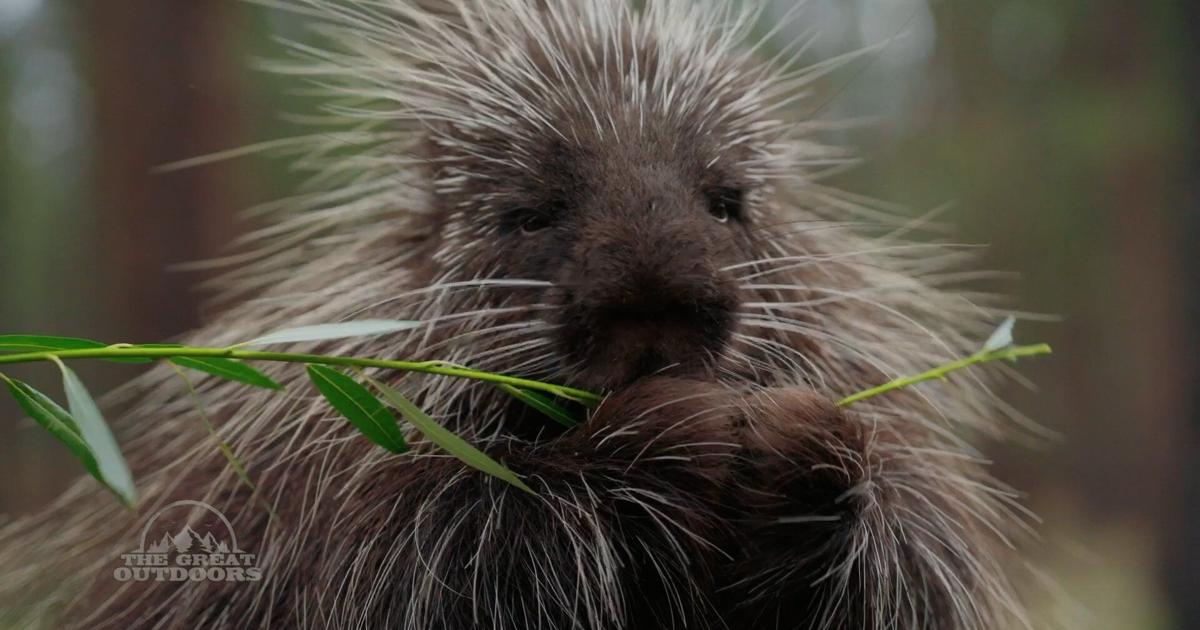BEND, Ore. — A survey is underway of the porcupine population in the Deschutes Basin, and you can help.
Assistant wildlife biologist Mikayla Bivona is leading the porcupine survey from the Oregon Department of Fish and Wildlife’s Prineville office.
“We’ve talked to a lot of people here in Central Oregon. People who have lived here their whole lives have told us, ‘Yeah, I used to see porcupines everywhere. Now that you say it, I haven’t seen one in 10 years. And I don’t know why,’” Bivona said.
Porcupine numbers are declining, but how much nobody can say because no local studies have ever been conducted, and there’s no baseline data about the prickly rodents.
We got lucky while covering this story by finding a porcupine sleeping in a tree. It was only the second porcupine Bivona has seen in the wild since the survey began.
Not many people realize that porcupines like to climb and sleep in trees. The next time you are out for a walk in the woods, look up. You might be surprised by what you see.
“They find a resting branch and they’ll essentially slump over it,” Bivona said. “When we were here last, we were hooting and hollering and that thing was sacked out. It did not care at all. They are funny. They sleep pretty hard.”
Biologists began the survey by scanning iNaturalist for pictures citizen scientists have taken of porcupines and posted on the popular wildlife sharing app. The research is expanding to include the use of trail cameras to verify reports of porcupine activity.
“We’ve had people tell us you used to not be able to drive on Highway 97 without hitting them, there were so many of them. Or they were in our ag fields, and we had problems with them eating our alfalfa,” Bivona said. “It is heartwarming how many people have reached out and called me to say ‘It was crossing the road.’ Almost everybody explains they have a really cute waddle as it walked down the road. They are a pretty charismatic species. I think a lot of people are getting excited about—now they are taking a harder look at them.”
A few facts about porcupines:
In winter, they eat the bark of trees. In summer, they eat grasses and forbs.Female porcupines give birth to one baby per year.Baby porcupines are called porcupettes.
“You do not want to cuddle a porcupine. As cute as porcupette sounds, they still have quills,” Bivona said. “Their quills are interesting. They have over 30,000 of them. Covers the back of their neck down to their tail. They are barbed and they are really difficult to pull out once they attach to something. That’s where a lot of people have to bring their dogs to the vet to remove the quills.”
Porcupines do not throw their quills. They need to be pushed into something, such as a dog’s nose, before they’ll release. Porcupines can slap their tails, which increases the possibility of their barbed quills making contact and sticking in whatever is threatening them.
Some people view porcupines as pests.
“They can actually end up killing a tree by feeding on it too extensively. People get concerned about that. I’ve had people tell me all the things they’ve tried. With all wildlife, it is typically going to take a compilation of things. The main thing I recommend is to get aluminum flashing and wrap it around the base of the tree. Cut any limbs that hang low that they can pull themselves up on because they are good climbers, but they cannot grip on that aluminum flashing. If they can’t get up, they will move on to a different tree they can more easily access.”
Until there is more data available, it’s difficult to say why porcupine numbers have declined, but being hit by cars is likely a contributing factor.
“They are so small, they’re slow moving and they’re dark,” Bivona said. “Their first reaction is to not run away. Even if they could, they would not run very quickly. Their first reaction is to turn their back, and that just doesn’t work on a lot of vehicles.”
Bivona tells people to be cautious as they drive near canyon areas or anywhere wildlife regularly crosses.
Keep an eye out for the big deer, the big elk — but also the little guys like porcupines.
The Oregon Department of Fish and Wildlife is working with the High Desert Museum to train volunteers on how to set up trail cameras and document the presence of porcupines. The research will be similar to the recent Sierra Nevada red fox project, to which volunteers made significant contributions.
“It looks smaller, and it looks darker. I wonder… we’ve gotten pictures of a mom and her porcupette on camera here. I’m wondering if that’s her baby and it’s finally figured out how to climb trees. Man… what a good day!”

